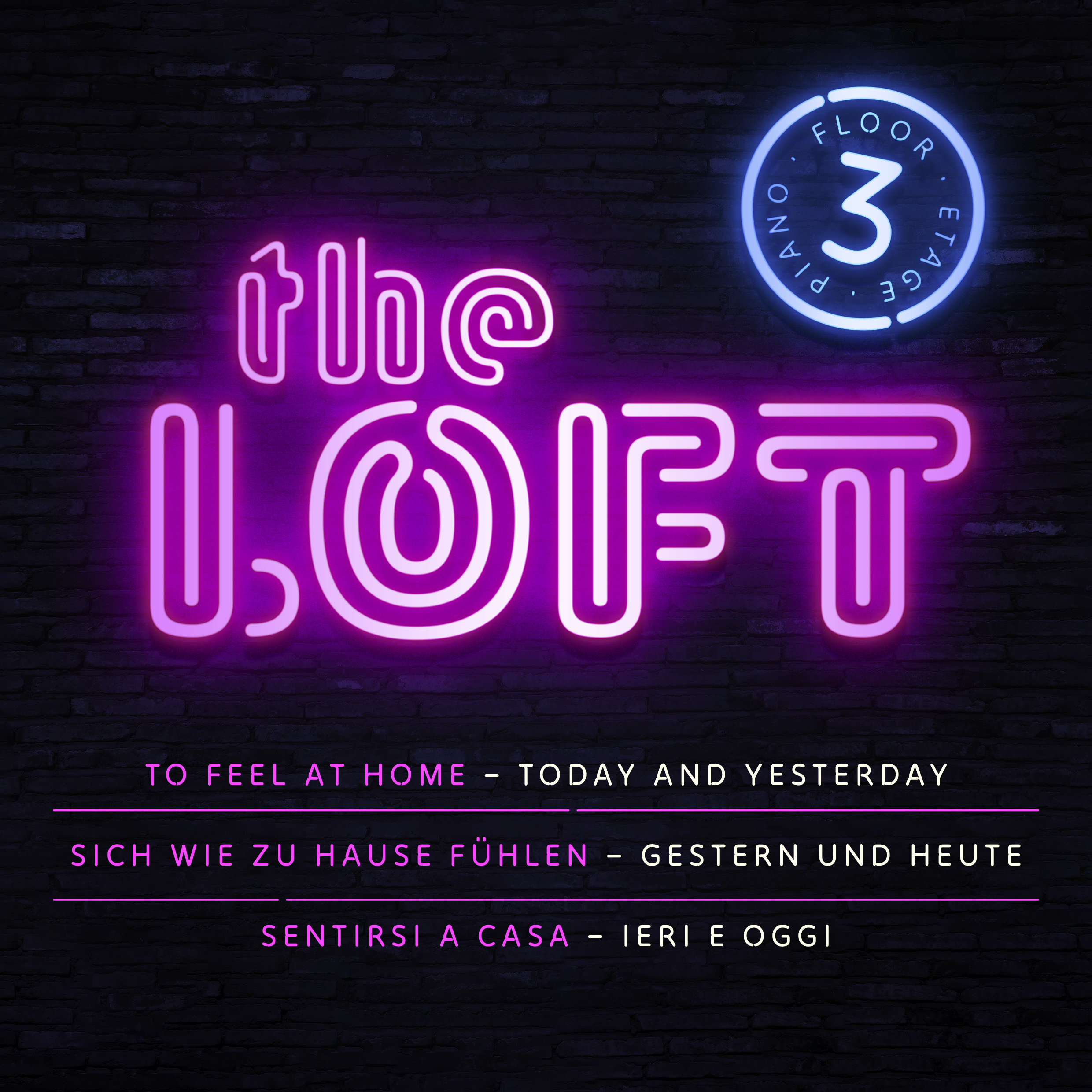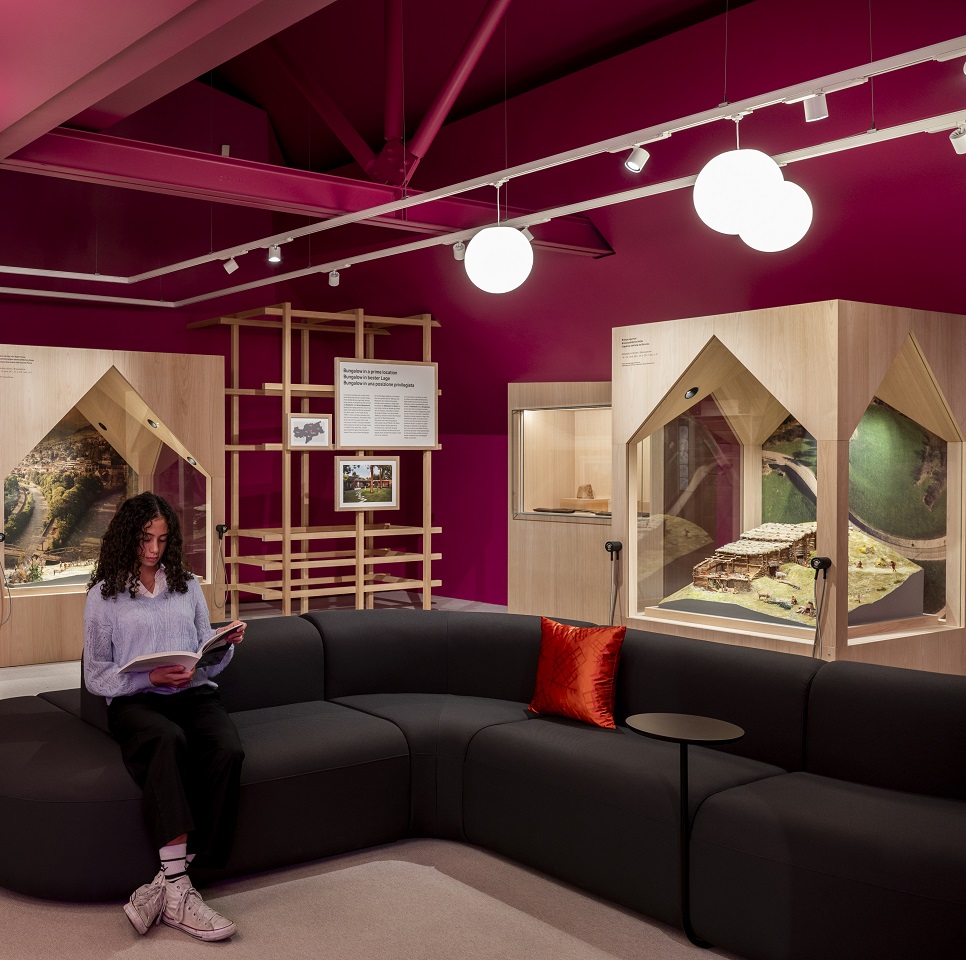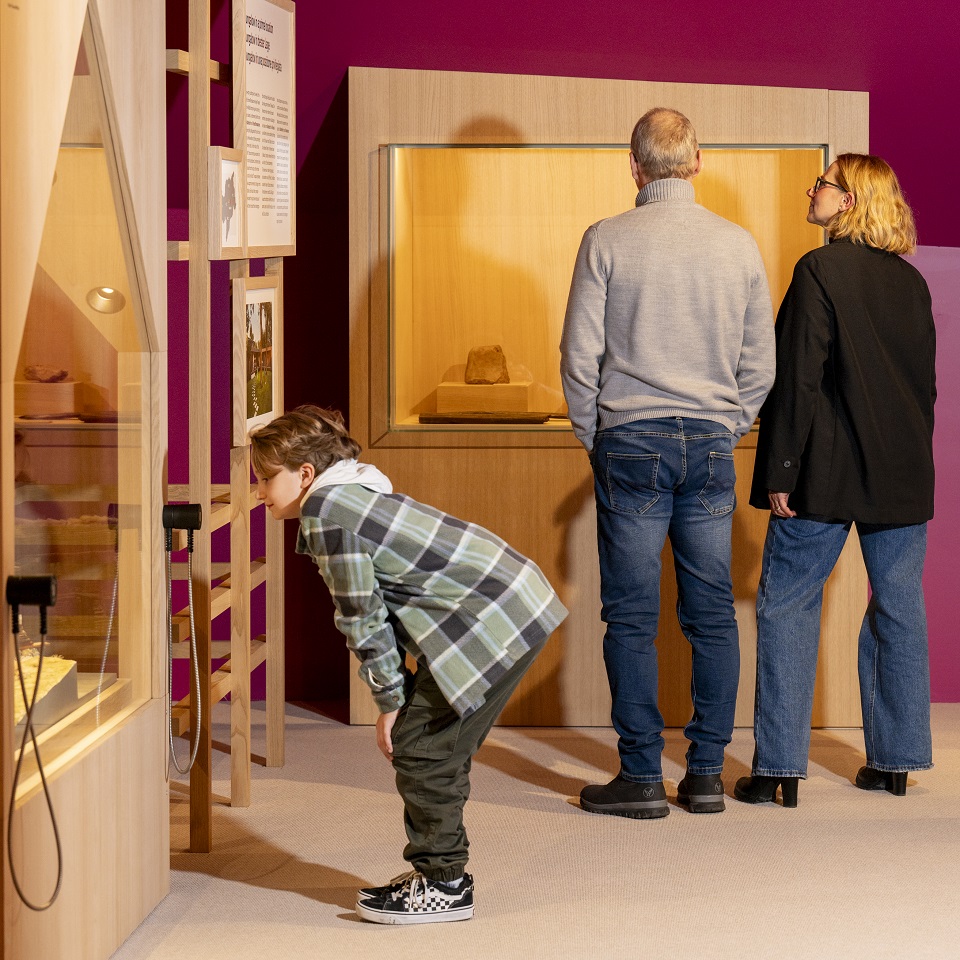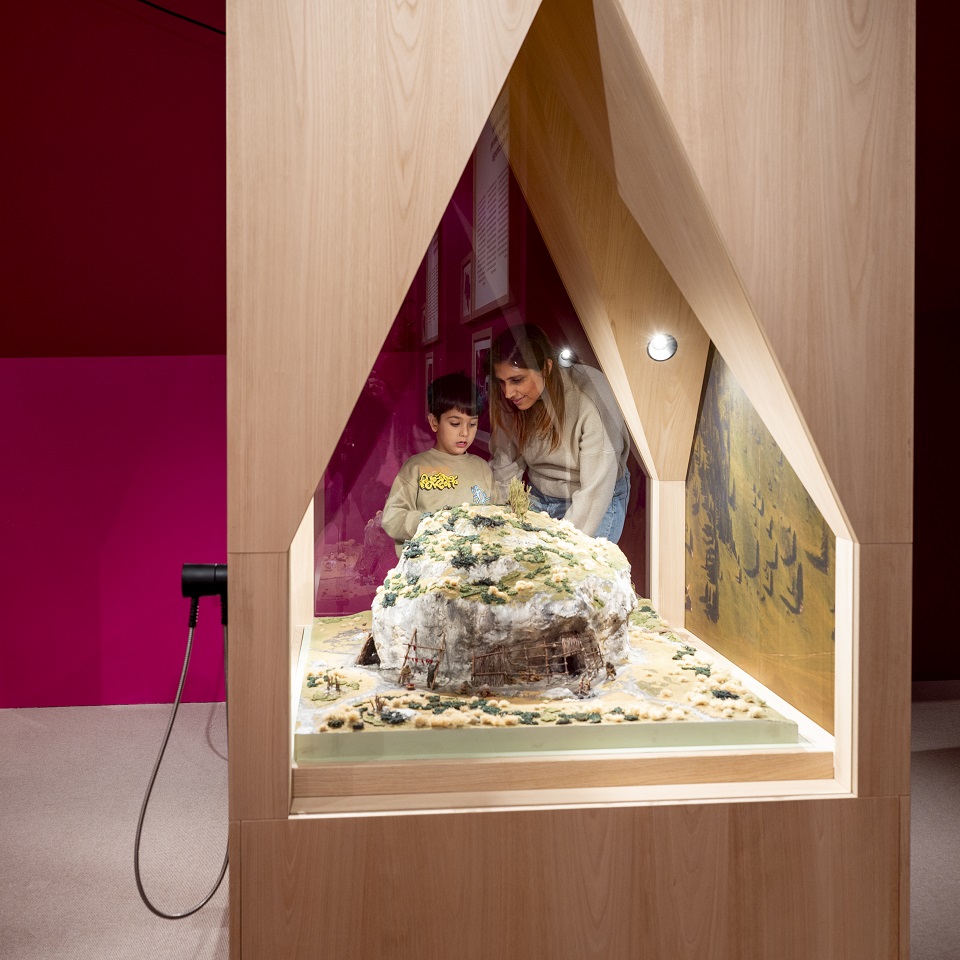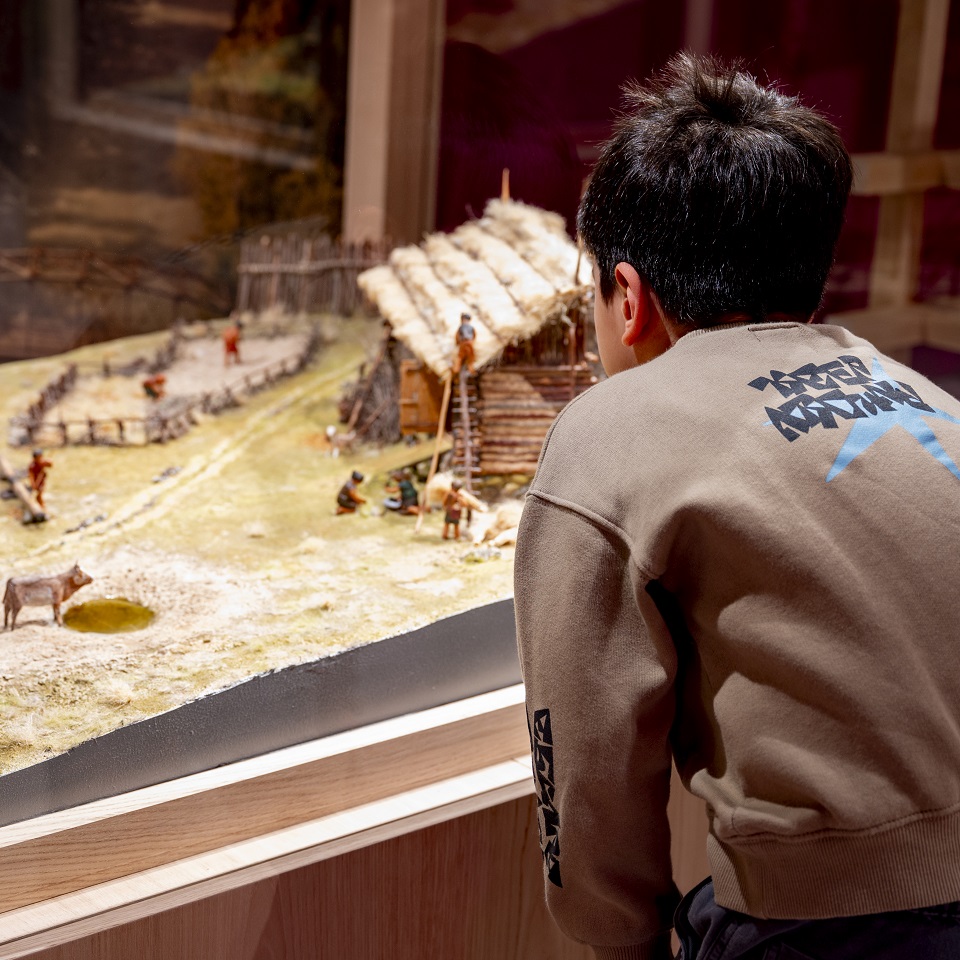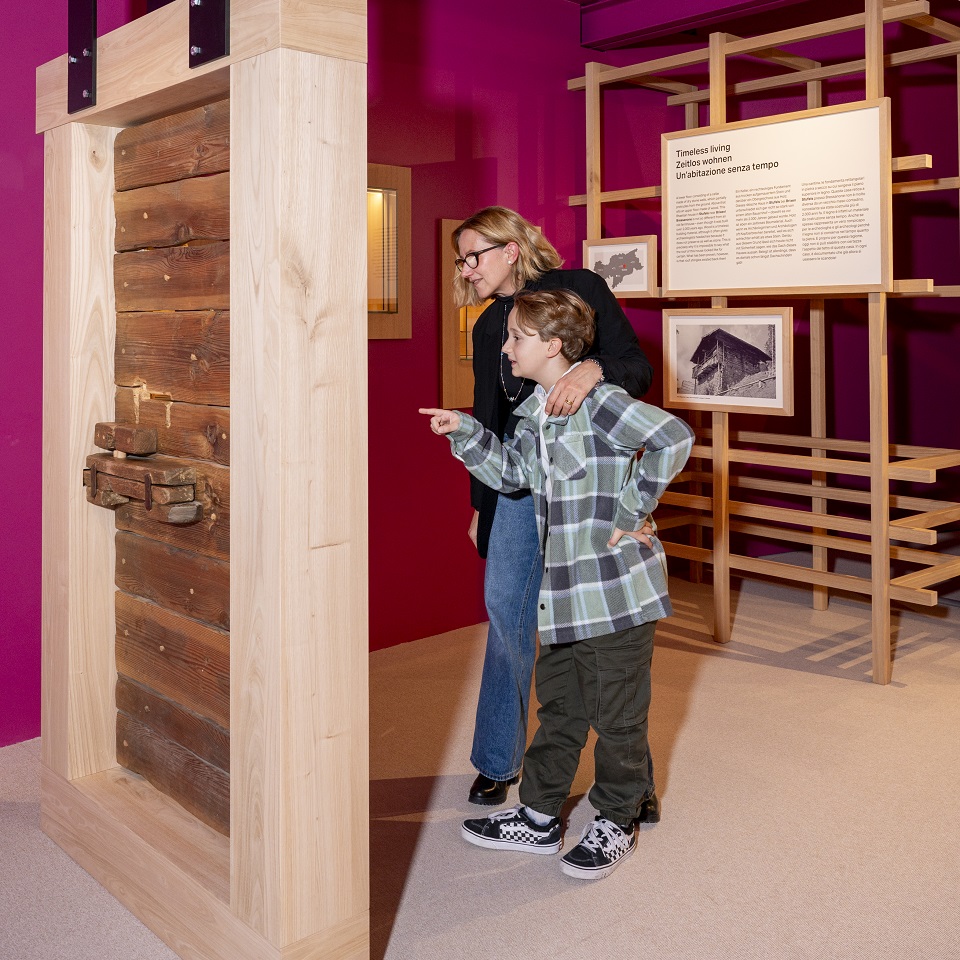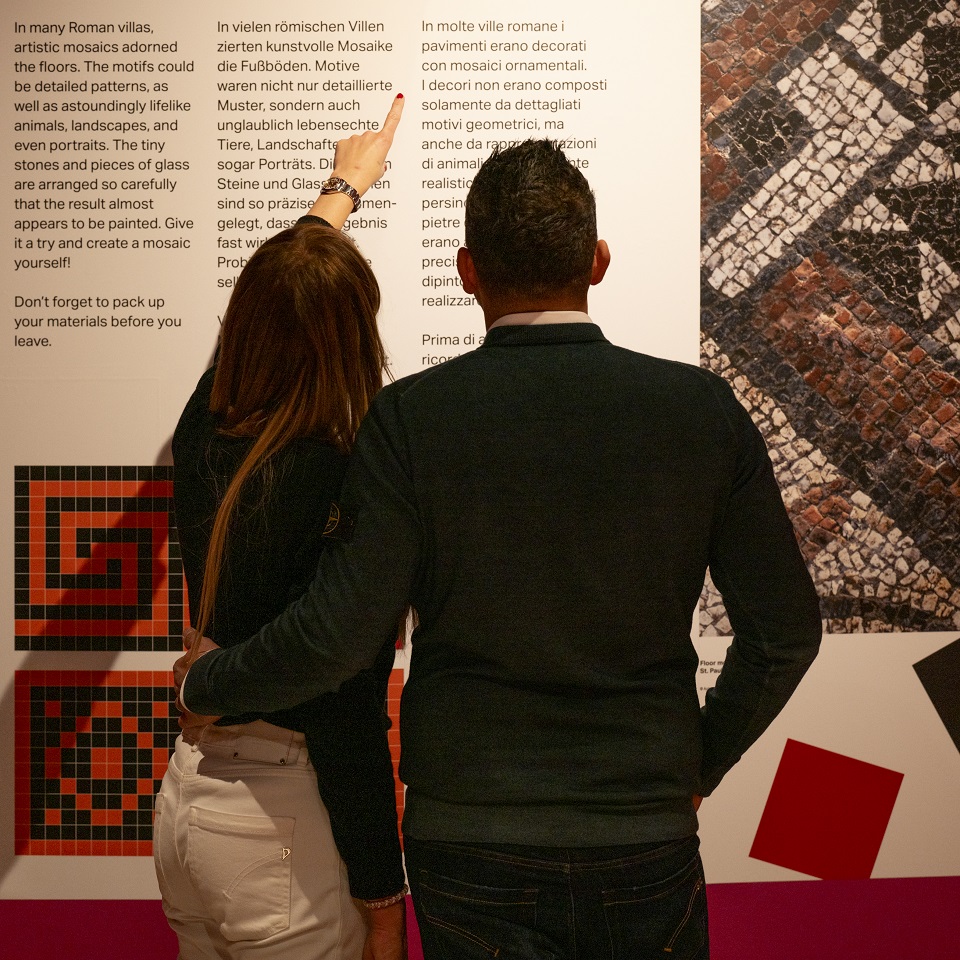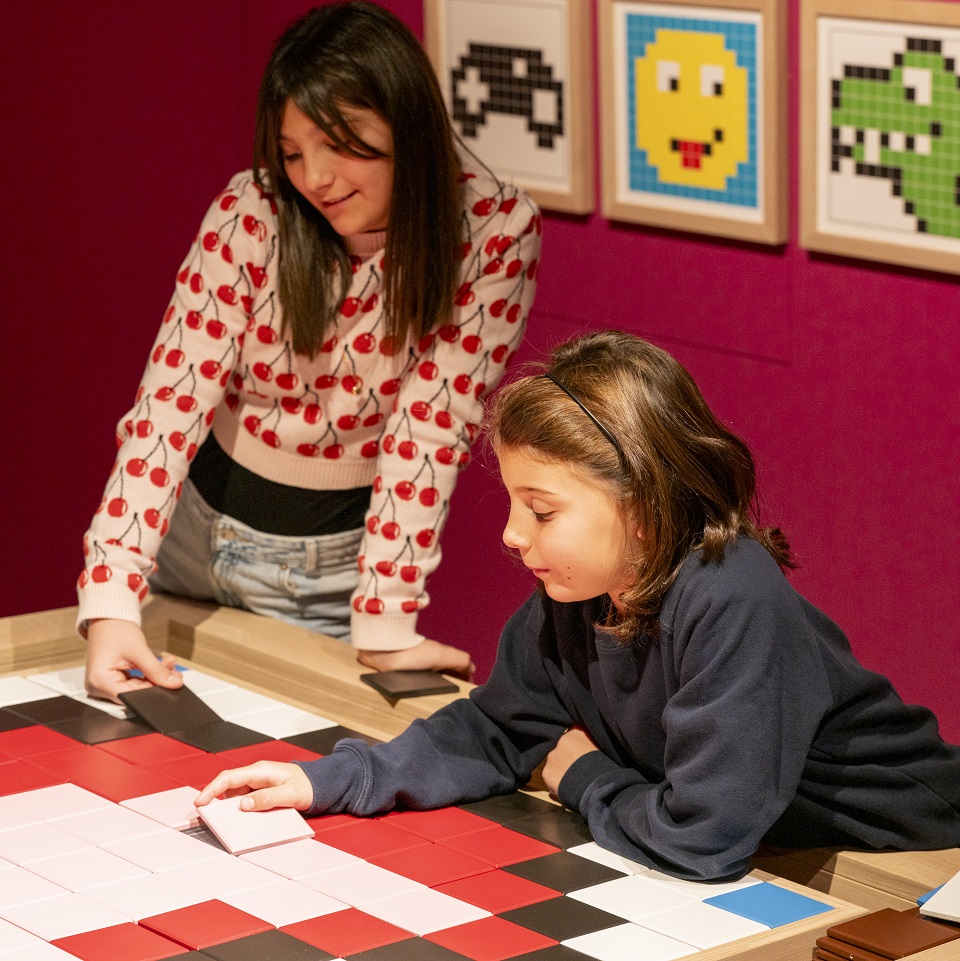THE LOFT
To feel at home – today and yesterday
New relax area for visitors
Bolzano/Bozen, November 26, 2024 - The South Tyrol Museum of Archaeology presents THE LOFT, a new space where museum visitors can relax and learn how living in South Tyrol has changed from Stone Age to the Roman Era.
Housing over the course of millennia
There is a world of difference between having a protective roof over one’s head and relaxing comfortably on a living room couch – and it was a long time before nomadic dwellings developed into places where people feel at home.
Feeling at home
Here in the Archaeology Museum, we have also created a place to relax. In THE LOFT our visitors can rest their feet and plan where to go together next. At the same time, they can learn a bit about how people used to live. In THE LOFT we present several types of houses from South Tyrol that have been reconstructed using archaeology and which range from the Mesolithic to the Roman Era.
Housing models
It is difficult for archaeologists to draw conclusions about a home just by looking at soil discoloration from eroded or filled holes in the ground, which are called post holes. To better imagine the lives of our ancestors, miniature models were created for the museum in 1997/1998. They were based on traces in the soil, knowledge of the building materials from the time, supplemented by structural analyses, and a dash of imagination.
1. Mesolithic summer hunting camp
Plan de Frea, Wolkenstein in Gröden / Selva di Val Gardena
9th–6th mill. BC
The Plan de Frea site provides insight into the lives of people who hunted and gathered provisions near Gardena Pass in the Mesolithic period. They only left faint traces behind and were perfectly adapted to their environment. Supplies of meat, fur, and horn were probably stored under a rock roof in summer. Nomadic shelters like huts and tents could be many different shapes – floorplans were circular, semicircular, oval, and trapezoidal. A wooden frame was covered with animal hides, ideal for the mountains above the tree line, especially in autumn and winter.
2. Bronze Age hut
Albanbichl, Brixen / Bressanone
Middle Bronze Age 16th–14th cent. BC
It is difficult to reconstruct huts from the Middle Bronze Age. Post holes, ditches, pits, and burned layers provide clues about the foundation, size, and structure. However, it is not known how the walls and roofs were constructed. Our understanding of housing at that time is fragmentary, and each reconstruction is an interpretation influenced by the assumptions and knowledge of the researchers.
Today it is assumed that the models are too plain and simple, especially when it concerns the interior decoration. Questions remain unanswered about things such as lighting conditions, heating options, exposure to smoke, and how indoor and outdoor spaces were used.
3. Two-story Iron Age house
Stufels, Brixen / Bressanone
Middle Iron Age, 6th–5th cent. BC
Despite numerous pieces of evidence of Rhaetian houses from the Late Iron Age, the scope for interpretation remains immense. An important feature is the two-story construction style: the rectangular foundation and dry stone walls of the lower floor provide a clue about the structure, and the upper floor was made of wood, often post-and-plank or log construction methods were used. Even though this construction style can still be found in Alpine cabins and farmhouses today, details like the layout of rooms, interior design, and decorations remain in the realm of assumptions.
4. Roman rest area Sebatum
St. Lorenzen / San Lorenzo di Sebato
1st–5th cent. AD
In Roman times, rest stops like this were grouped around a smithy, a horse stable, and a tavern – often with its own thermal bath! In addition, there was a farm which supplied the station with food and animal feed. Whoever was travelling back then would spend the night in these rest stops which were found every 30 to 50 kilometers along the road; that was about a day’s journey.
5. Roman villa rustica
Puenland, St. Lorenzen / San Lorenzo di Sebato
3rd–5th cent. AD
Roman villas like this one on the Puenland property in St. Lorenzen / San Lorenzo offered a pleasant living environment and their own private spaces for life and work. It is no wonder that even locals who could afford it constructed villas like these. The materials were not significantly different from those used for construction in the past. Yet lime was new, and this made it possible for people to make mortar and construct increasingly complex buildings. Using clay tiles for heating systems and roofs was also new.
THE LOFT will be open until November 2nd, 2025.
PHOTOS:
THE LOFT . Feel at home - today and yesterday (c) South Tyrol Museum of Archaeology / Manuela Tessaro
The use of the images is free of charge if the copyright is correctly indicated.
PRESS CONTACT
Katharina Hersel
South Tyrol Museum of Archaeology
Museumstr. 43, I-39100 Bolzano
T +39 0471 320114
press@iceman.it
www.iceman.it
Facebook & Instagram: OetziTheIceman
DOWNLOAD FILES


